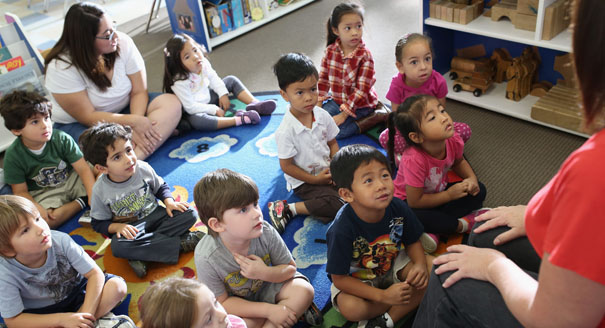As is often the case, some of the most heated debates in this year’s election cycle seem to be centered on classrooms and education reform. Chief among them is Initiative 1351, a call for reduced class sizes that if passed, would add 25,561 new teachers and non-teaching support staff to the public school system’s payroll.
The dirty little secret is it would alter classroom teacher to student ratios. It adds no new classrooms, nor does it remodel existing classrooms to increase their square footage. The justification is, that if we put another adult body in the room, the ratio drops, we reduce the size of the “class”, (in the vernacular) and everyone feels better. Not all of the adults will be certified teachers.
I-1351 would cap “class sizes” or ratios at 17 students for grades 4-12. High-poverty and low-performing schools would receive extra attention with just 15 students for every early education teacher and a limit of 23 students for grades 5 and up. That translates into 25,561 new staff, the majority for non-teaching positions, like 1,027 additional administrators and 17,081 support staff. Only 29 percent of the new hires, or 7,453, would be teachers.
But critics of the initiative have two main worries. I-1351 doesn’t outline a funding source for the new resources it mandates, despite costing an estimated $4.7 billion through 2019, according to the state Office of Fiscal Management. Critics also note that the state has already committed to adding more teachers for grades K-3, meaning I-1351 if passed, would only impact upper grades. Still others note that the correlation between reducing class sizes and improving classroom performance is not such a clear one. A 1996 class-size reduction program in California didn’t find the same successes of a near identical program in Wisconsin, suggesting that merely changing the student to teacher ratio isn’t enough.
“It’s like voting for puppies and apple pie,” says Liv Finne, the Washington Policy Center’s director for education. “It’s asking us to vote for reduced class sizes but doesn’t ask for higher taxes to pay for that…It really is deceitful to have an initiative put on the ballot that doesn’t say it will cost money if you vote for it, which is essentially what we’re doing here.”
Finne worries that coupled with the McCleary ruling it will push to the side other important funding needs in education, like transportation, all-day kindergarten and the cost of basic material supplies. She also notes that the initiatives main backers, the Washington Education Association, the state’s largest teacher’s union, have much to gain if the initiative goes into effect. Most teaching positions in the state’s public schools mandate that new hires join the teachers union. The added positions would therefore result in at least $7.4 million a year more in new-employee dues.
Asked what she made of criticisms about I-1351’s opaque funding scenario, Mary Howes of the “Class Size Counts” campaign, says voters will see through the noise: “I think most voters agree that funding a quality education for our kids is a smart investment. Opponents of 1351 keep coming up with reasons why we can’t reduce class sizes…Our kids only get one chance at a good education, and 1351 will finally do something to give them the personal attention they need to learn and succeed.”
Howes is a former middle school teacher and has four boys now in Seattle public schools. Her own parenting and teaching experience, she says, underscores the importance of personal attention in classrooms, particularly when it comes to the math and sciences, areas where many students fall behind. Howes cites a study that ranks Washington state 47th in the nation for class size. She recounts also, campaigning last fall when she and her colleagues asked parents, students and teachers to submit their class sizes on the campaign’s website. Of the 5,000 who participated, some elementary classes reported as many as 30 kids, while other high school classrooms claimed they had as many 40 students in core subject areas.
“As a parent of four kids in Washington schools and a former Washington state public school teacher,” says Howes, “I have seen firsthand how critical it is for students to connect with caring adults in our schools.”
Opponents say the sentiment behind I-1351 is admirable, but its execution leaves something to be desired.
“In education, any one-size-fits-all mandate like this class-size initiative is bad for students,” says Finne. “It removes the ability of the local-most educators to control where resources are spent.”
Meanwhile, recent polls indicate that voters not only agree with the sentiment but are willing to use taxpayer dollars to support it. An Elway poll from earlier in the month reveals that 66 percent of those questioned would definitely or likely vote in favor of Initiative 1351.
Your support matters.
Public service journalism is important today as ever. If you get something from our coverage, please consider making a donation to support our work. Thanks for reading our stuff.




